Lucerne, nestled by Lake Lucerne and surrounded by the Swiss Alps, is famed for its picturesque scenery and historic wooden bridges. A trip to Lucerne would not be complete without visiting its iconic wooden bridges. The Chapel Bridge (Kapellbrücke) and the Mill Bridge (Spreuerbrücke) not only connect parts of the city but also offer a glimpse into its rich history. For a map of the city and its monuments click here.
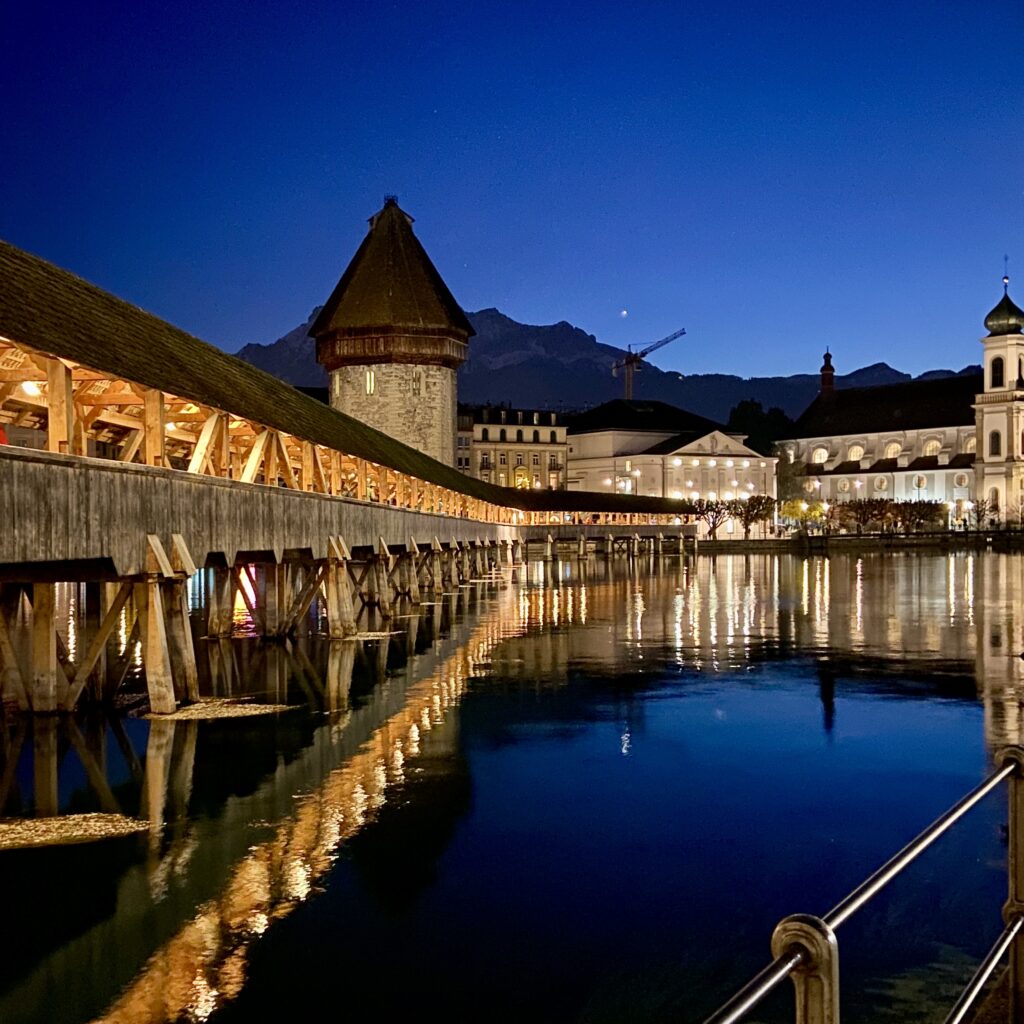
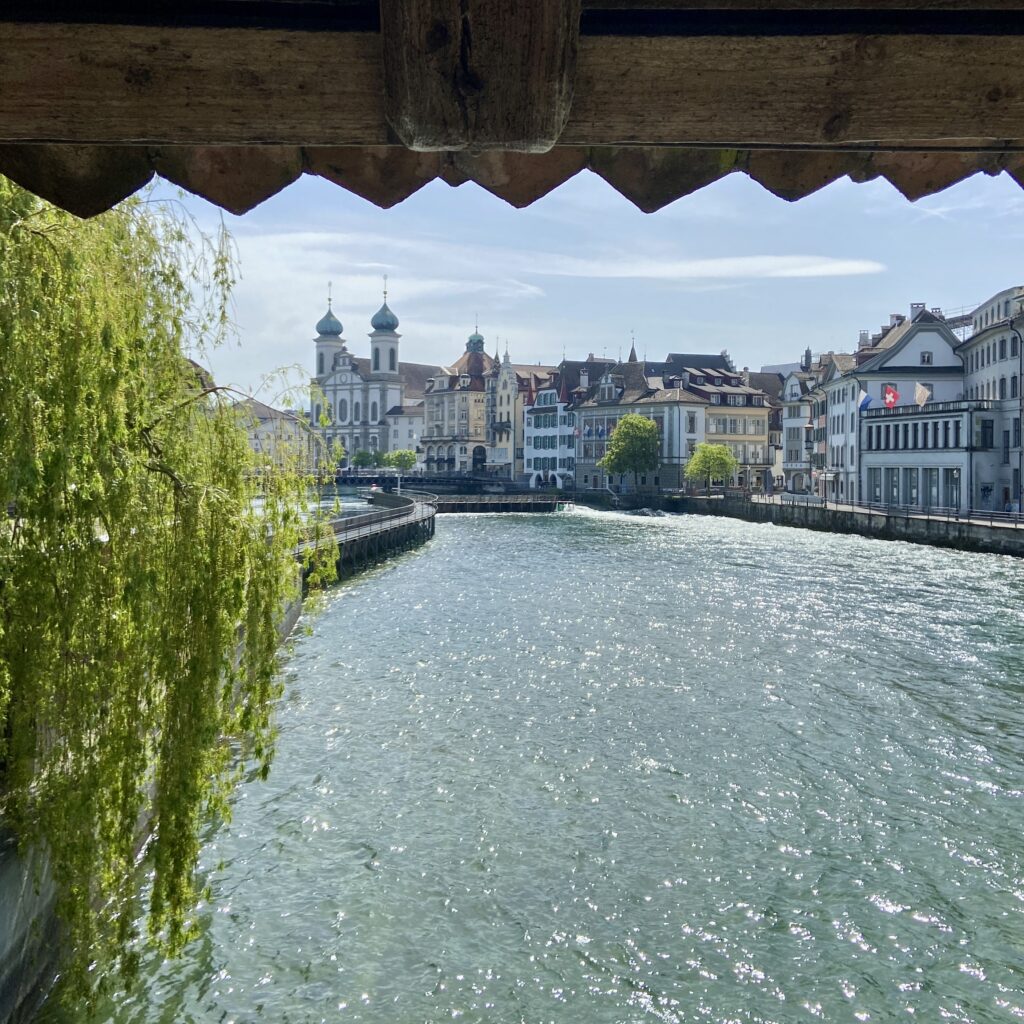
Chapel Bridge: A Symbol of Resilience
The Chapel Bridge is Europe’s oldest covered wooden bridge, originally built in 1332. It zigzags across the River Reuss, connecting the Old Town to the New Town. The bridge features stunning triangular paintings under its roof, depicting Lucerne’s history and patron saints. Sadly, many original artworks were lost in a devastating fire in 1993, believed to have been caused by a cigarette discarded from a boat below. Reconstruction was swift, taking just ten months, and today the bridge stands as a testament to Lucerne’s resilience. As you walk across the bridge today, you can see the scars of the fire and view the refurbished paintings. There are stairs on either side of the bridge, but a stroller can be pushed across with ease. It can get crowded during the summer season.
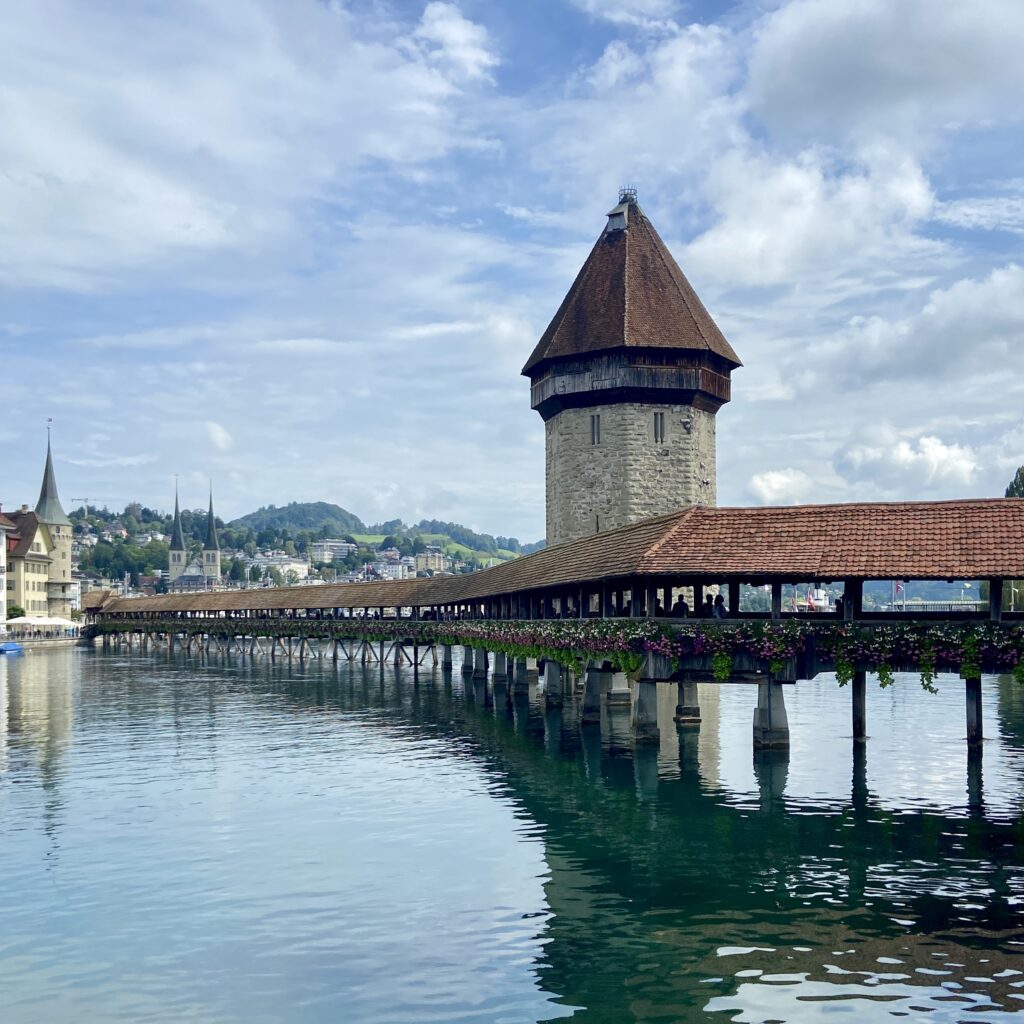
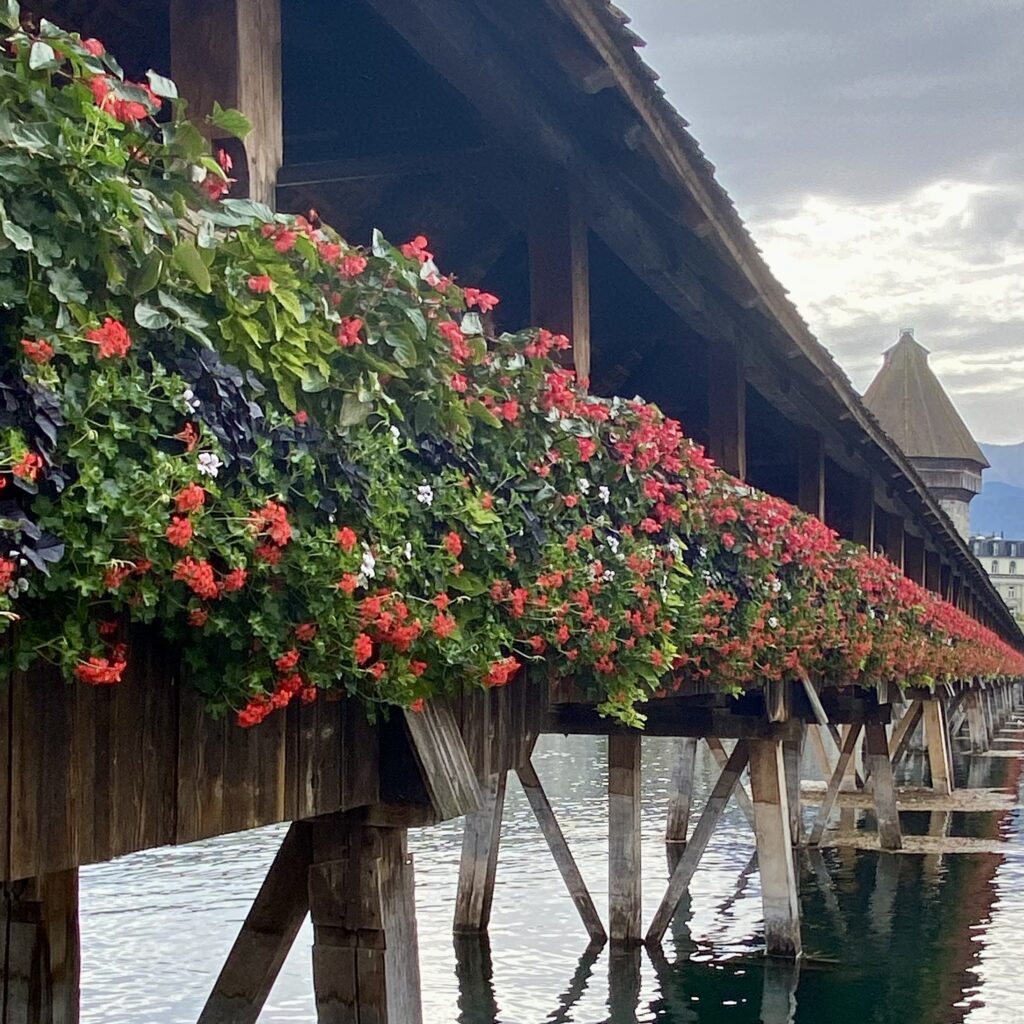
Take time to admire the Water Tower of Chapel Bridge—a historic landmark that has served multiple purposes over centuries. Built before the Chapel Bridge in the 13th century, it was initially a symbol of power and defense, functioning as a watchtower. The tower also has a darker past, having been used as a prison and torture chamber for hundreds of years. Additionally, it housed the state treasury and later served as an archive. Today, the Water Tower is home to Alpine and Common Swifts, migratory birds that nest in its roof.
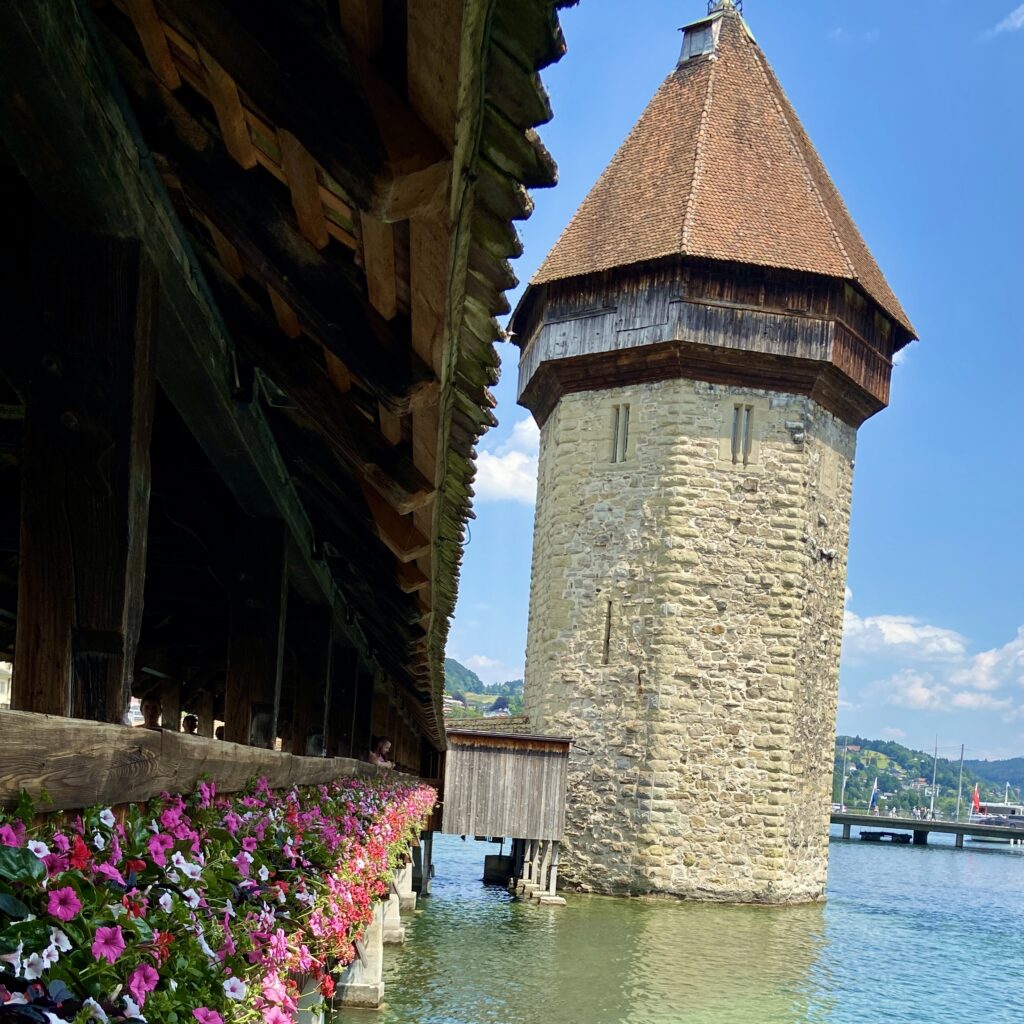
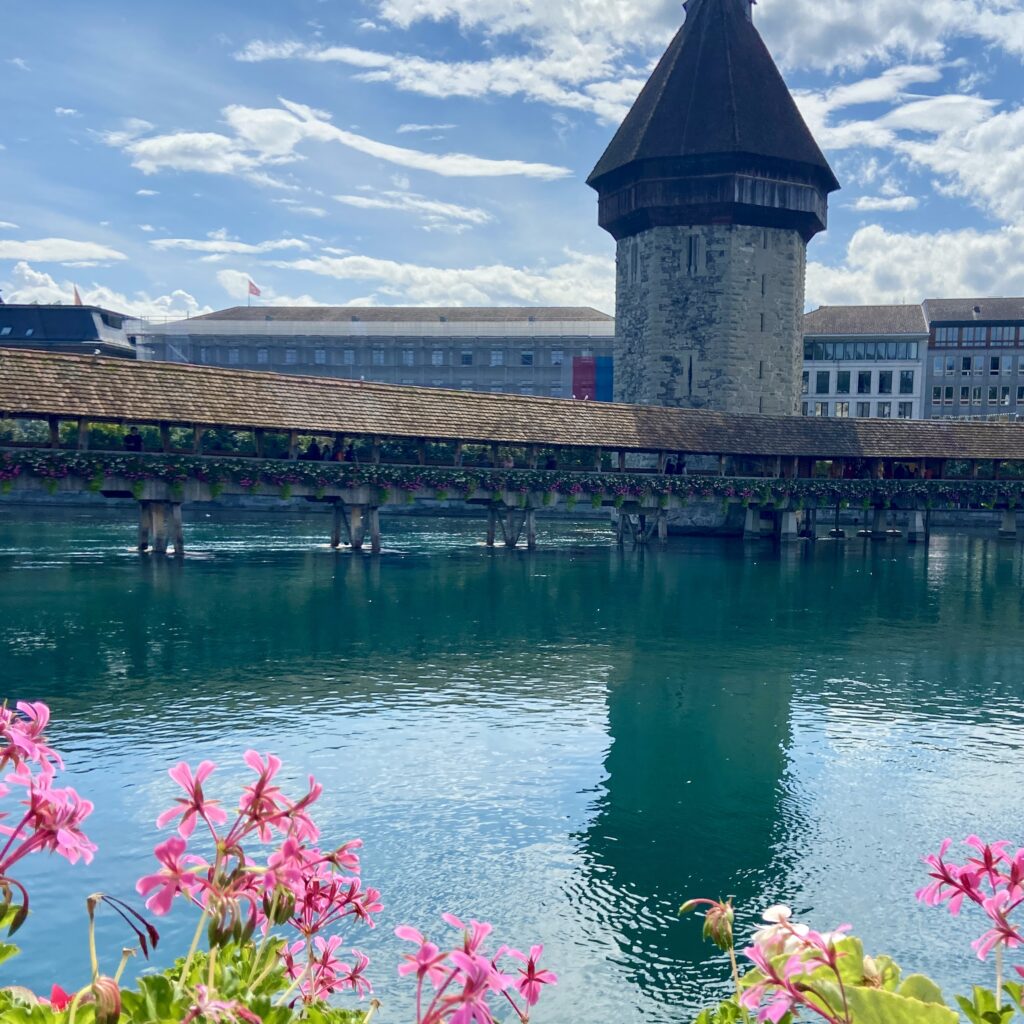
One of our favorite features of the bridge is its charming vibrant flower boxes, which require watering by hand to keep them blooming beautifully. This task takes 5–6 hours weekly depending on weather conditions, with the city gardener tending to them during quiet morning hours.
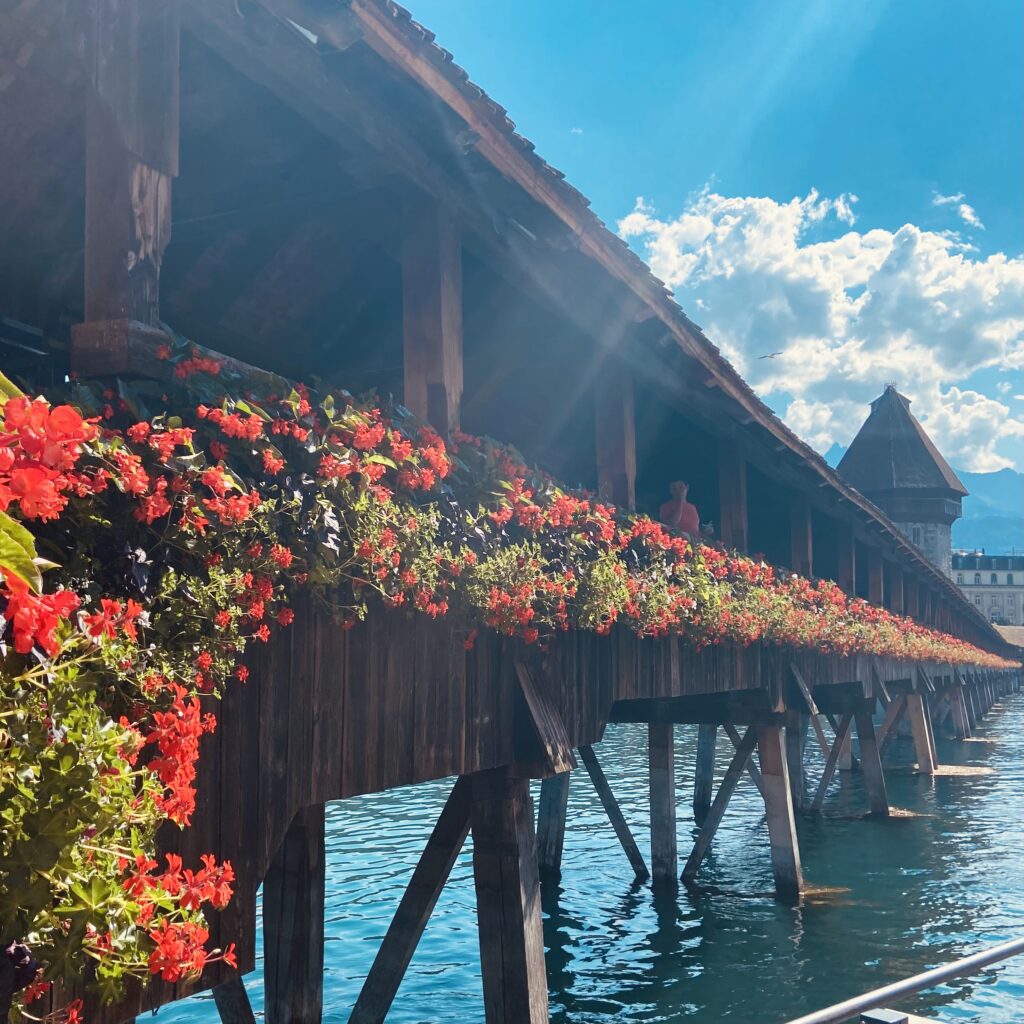
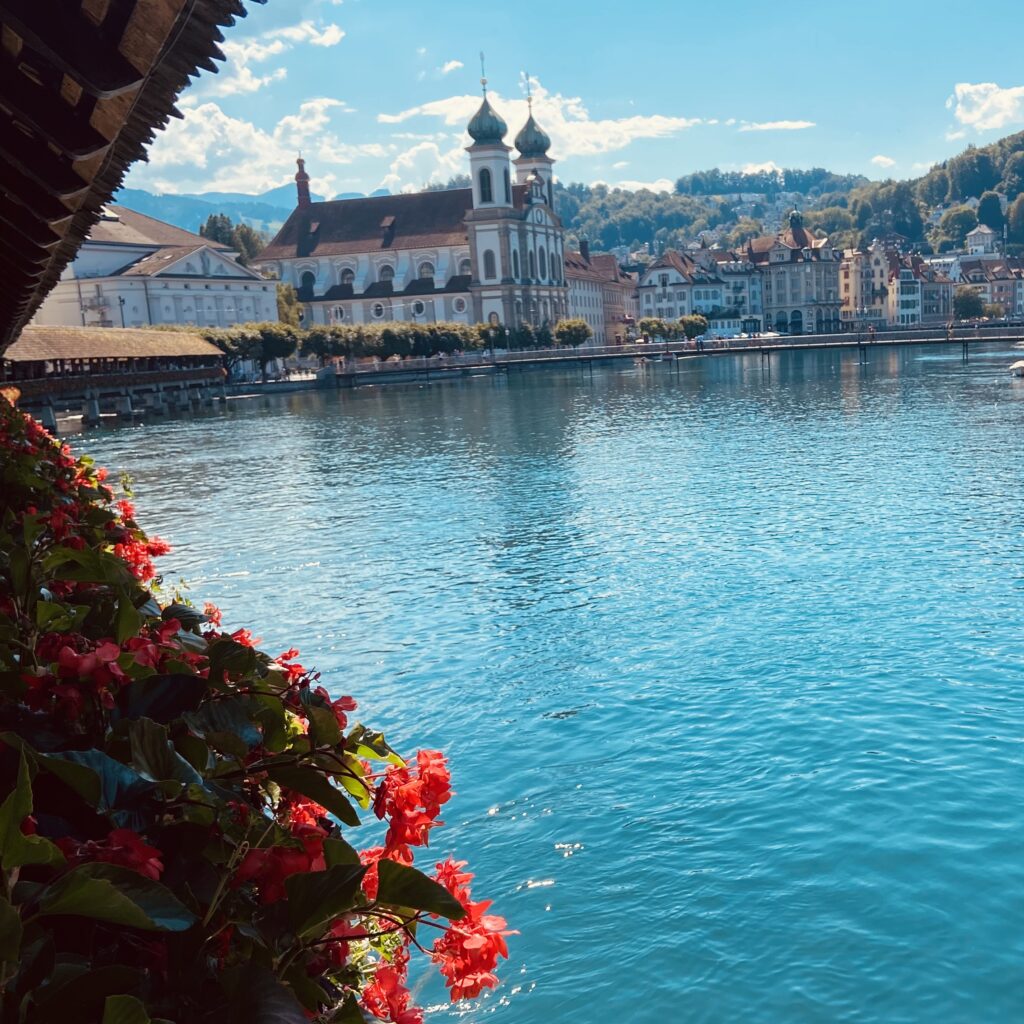
Mill Bridge: History and Art
The Mill Bridge dates back to 1407 and spans the Reuss near the Needle Dam. Unlike the Chapel Bridge, it remains entirely original. Its gables feature Kaspar Meglinger’s haunting Dance of Death murals, commemorating plagues that swept through Lucerne centuries ago. This bridge offers a quieter atmosphere for reflection on history and art. Only one side of the bridge has stairs.
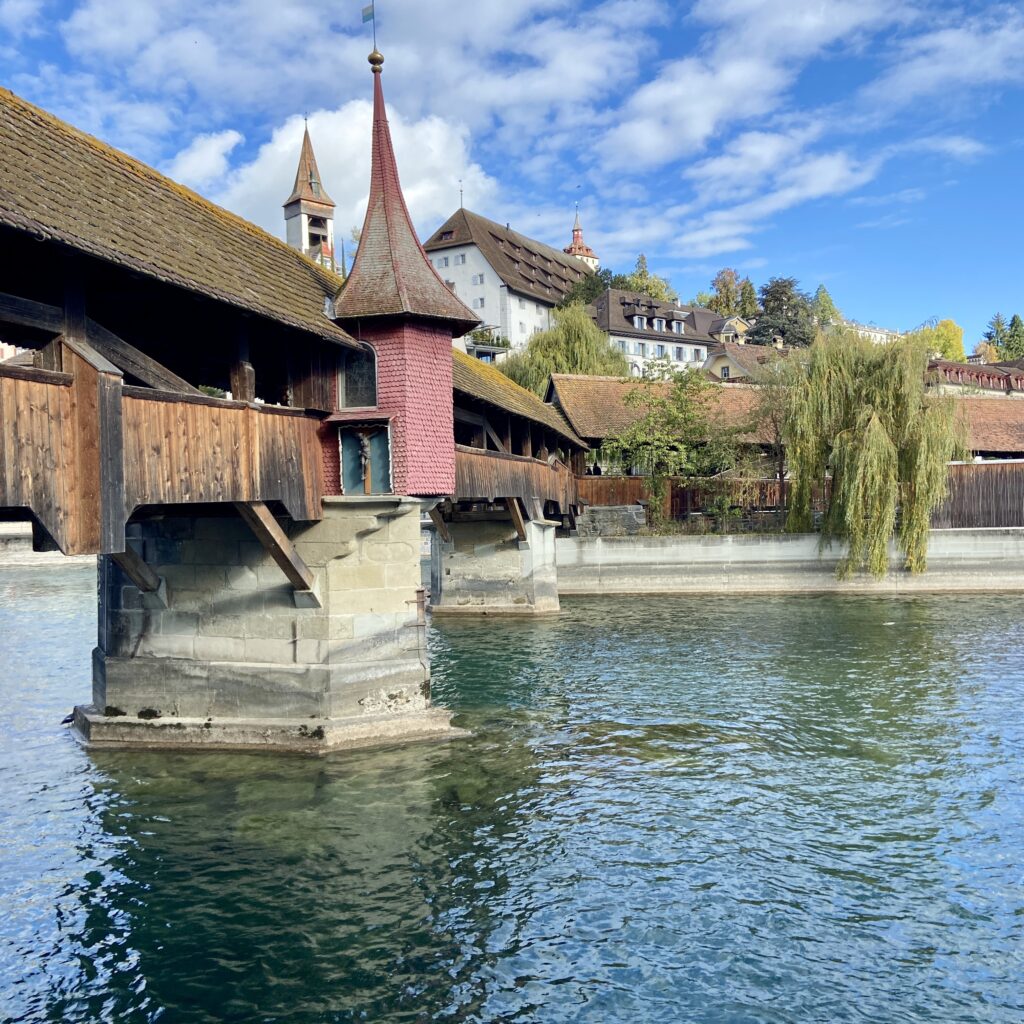
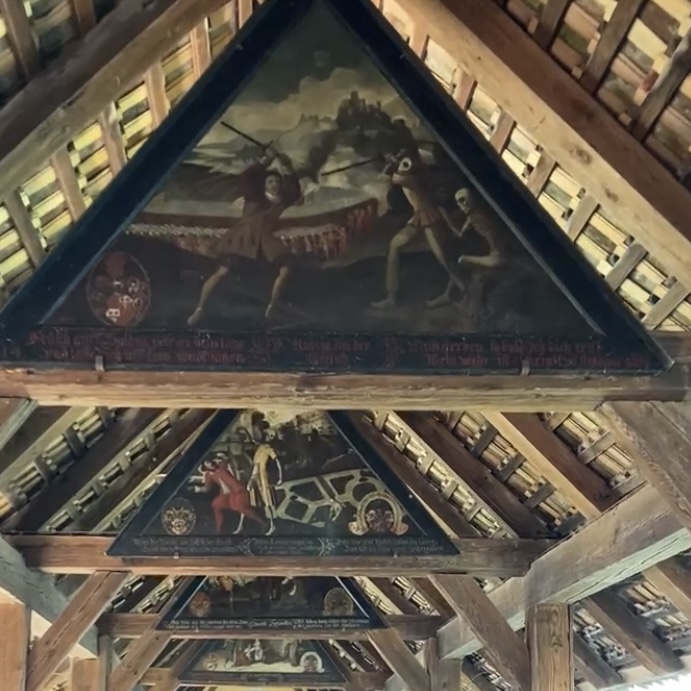
Needle Dam: A Marvel of Engineering
Near the Mill Bridge lies the Needle Dam (Reusswehr), built in 1859. This unique structure regulates Lake Lucerne’s water levels manually using wooden needles shaped like paddles. It plays a critical role in flood prevention while ensuring optimal water flow throughout the year. When visiting, we always check how many needles have been adjusted. Watching water flow through the dam is both beautiful and relaxing. Enjoy views of the Needle Dam from the Mill Bridge while explaining its engineering marvels to kids.
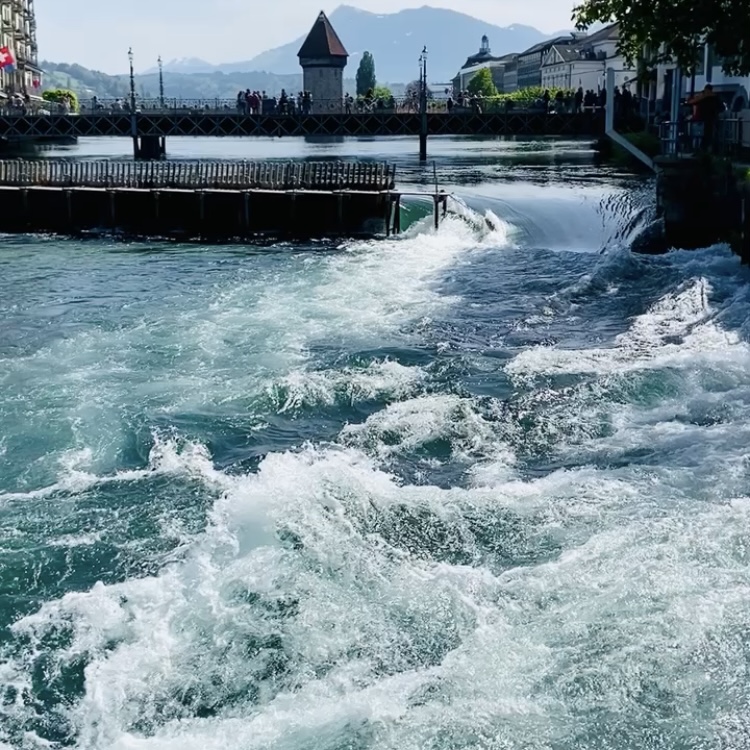
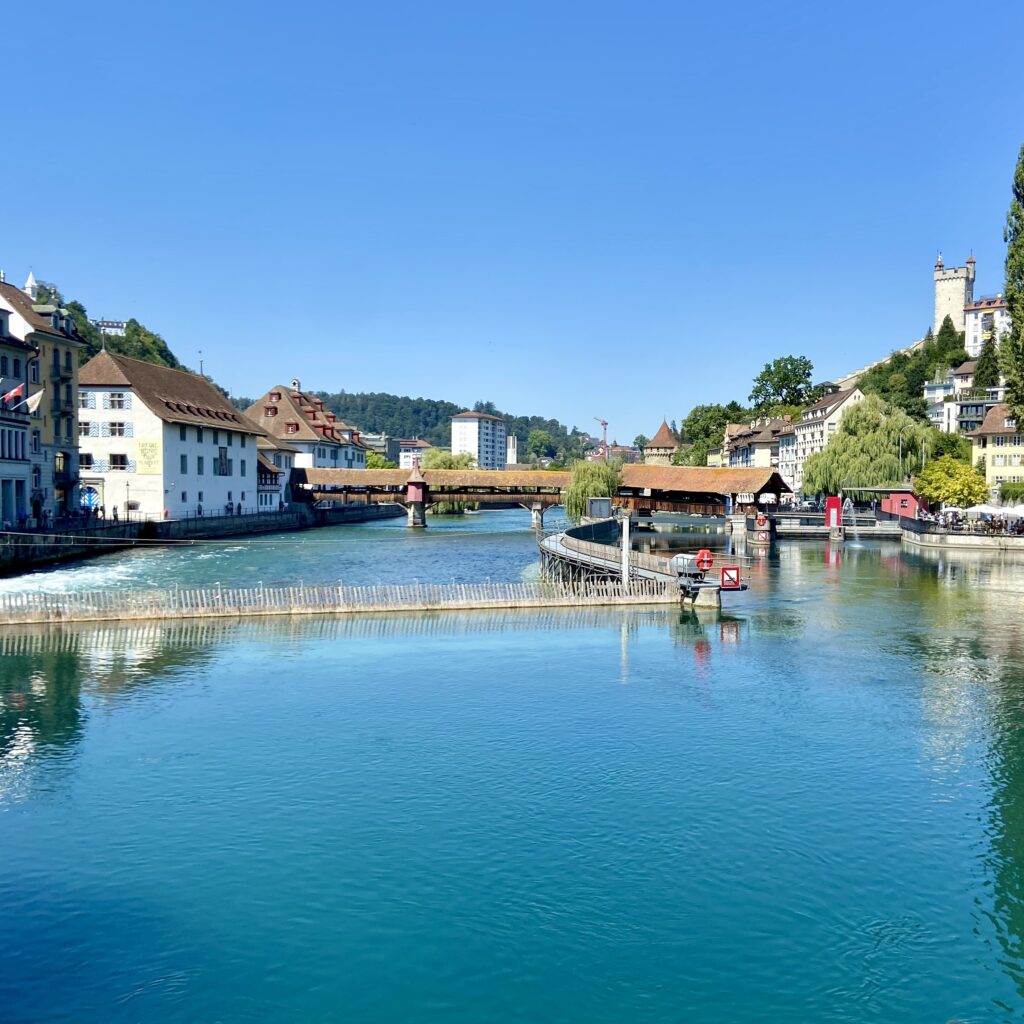
Where to Eat
There are many restaurants near these bridges, though they can get crowded during summer. For a full list of our recommended restaurants click here. Here are some family-friendly favorites closet to the bridges:
- Rathaus Brauerei – A historic brewery offering traditional Swiss cuisine and artisanal beers brewed on-site in copper vats. It has a kids’ menu; our children love their pretzels.
- Tiglio Osteria – A cozy spot serving authentic Italian cuisine with fresh seasonal ingredients and warm hospitality.
- Ammos – A Greek restaurant offering dishes like souvlaki and moussaka with outdoor seating by the Needle Dam.
- The Stadtkeller – Traditional Swiss food paired with folklore shows featuring yodeling or alphorn playing (reservations recommended). Contact the restaurant to determine show times.
- Dieci Gelateria – Italian gelato with seating overlooking Chapel Bridge.
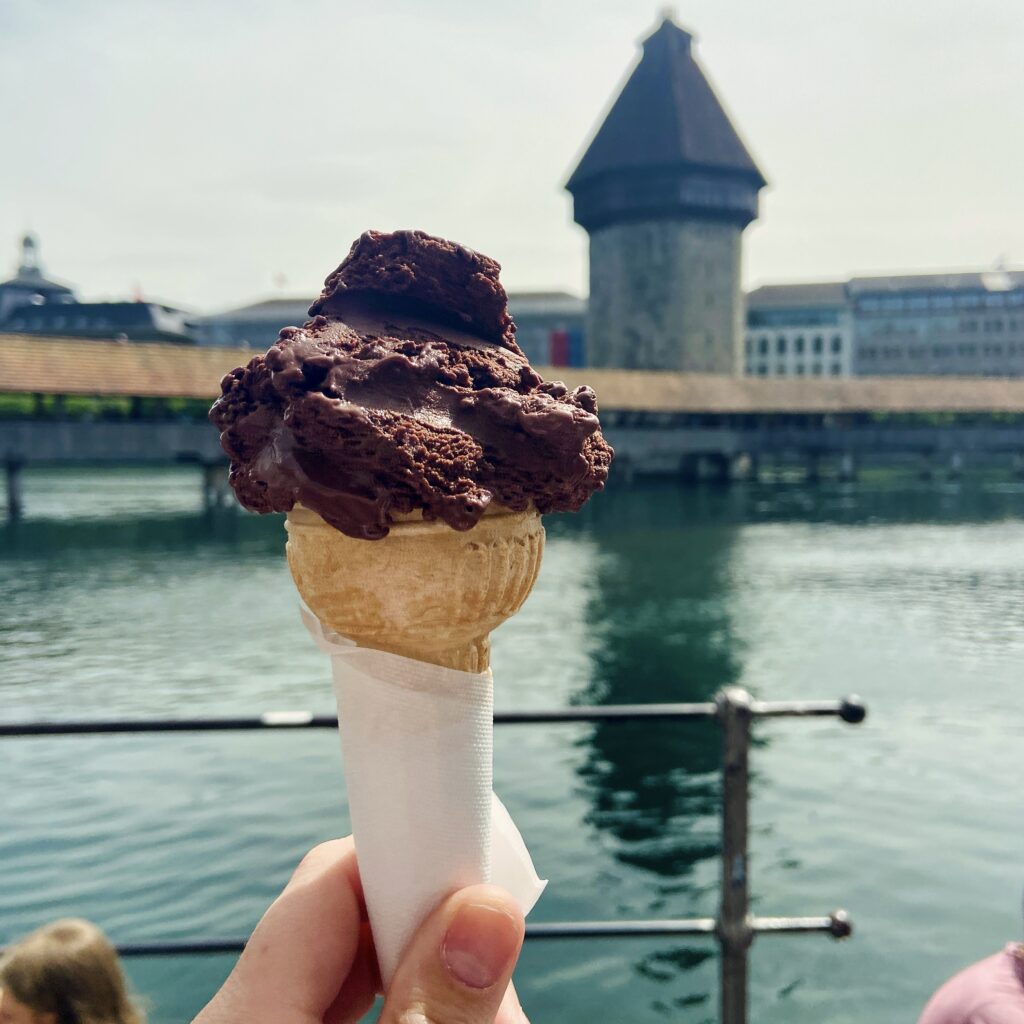
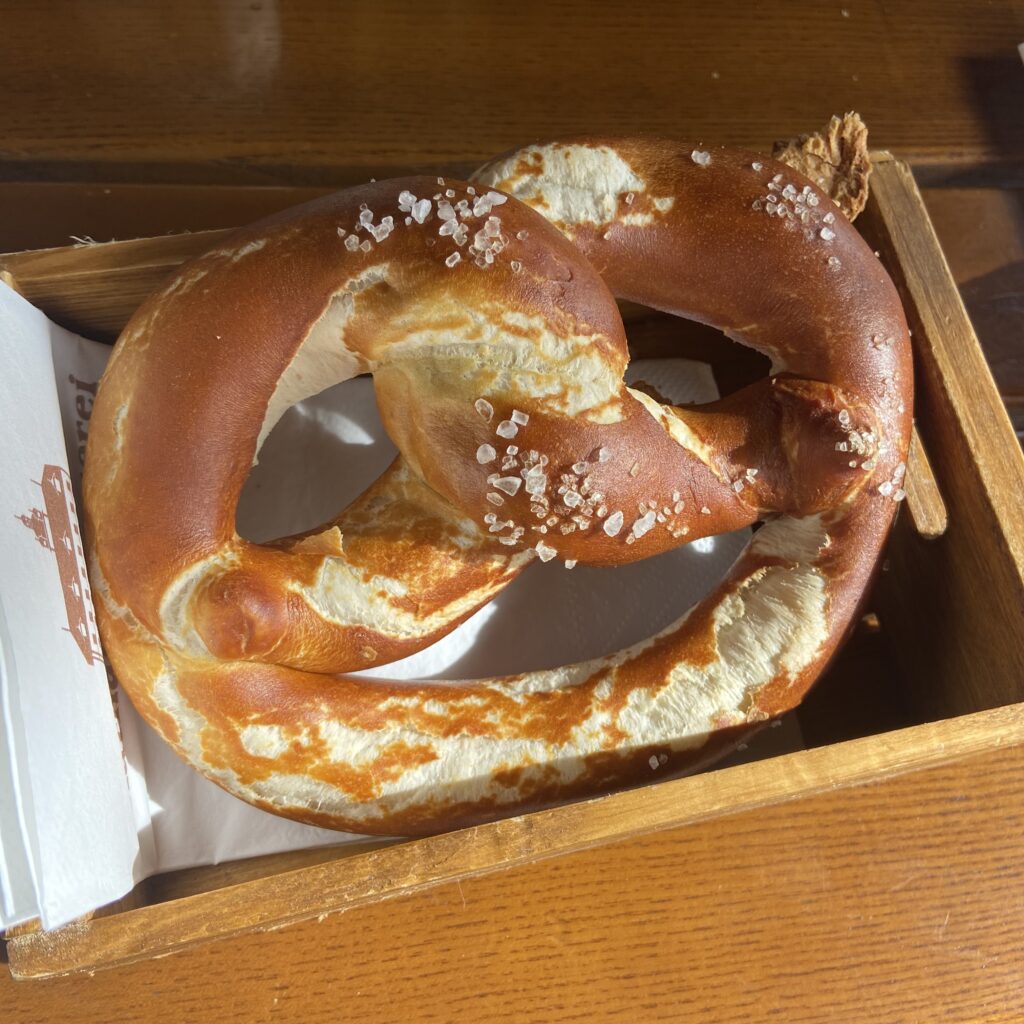
Activities Nearby
Lucerne offers plenty for families beyond its bridges. For a full list of activities click here. The activities listed below are closet to the bridges.
- Explore inside Jesuit Church St. Francis—its marble decorations are painted rather than real marble! Entrance is free.
- Visit Museum Luzern for exhibits on earth sciences, regional flora/fauna, and an engaging insect collection.
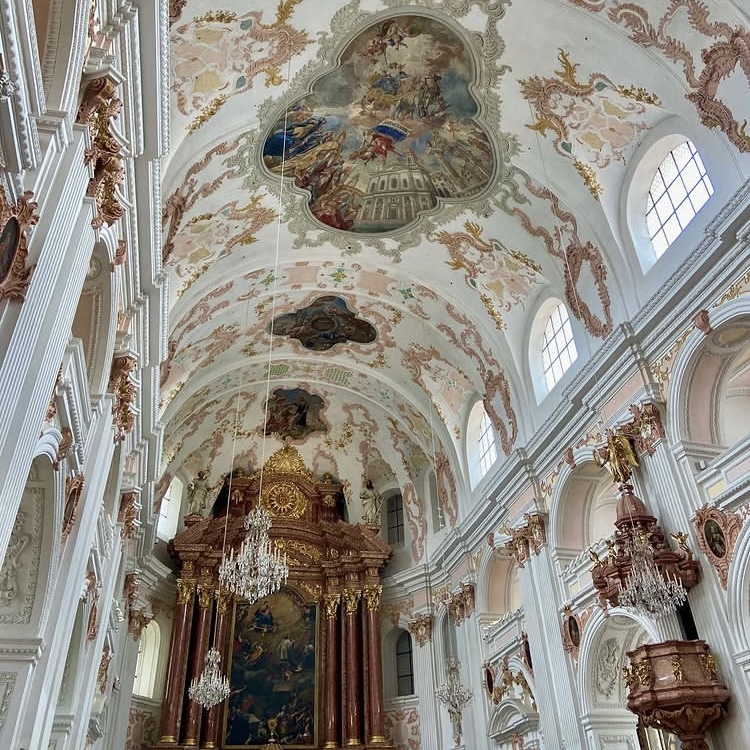
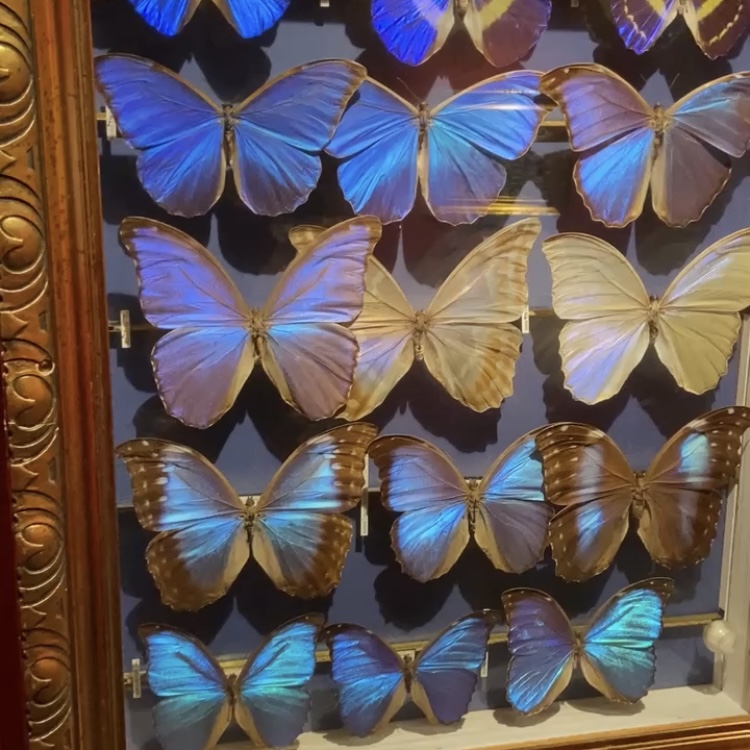
Lucerne’s wooden bridges are more than crossings—they’re gateways into Switzerland’s past!
